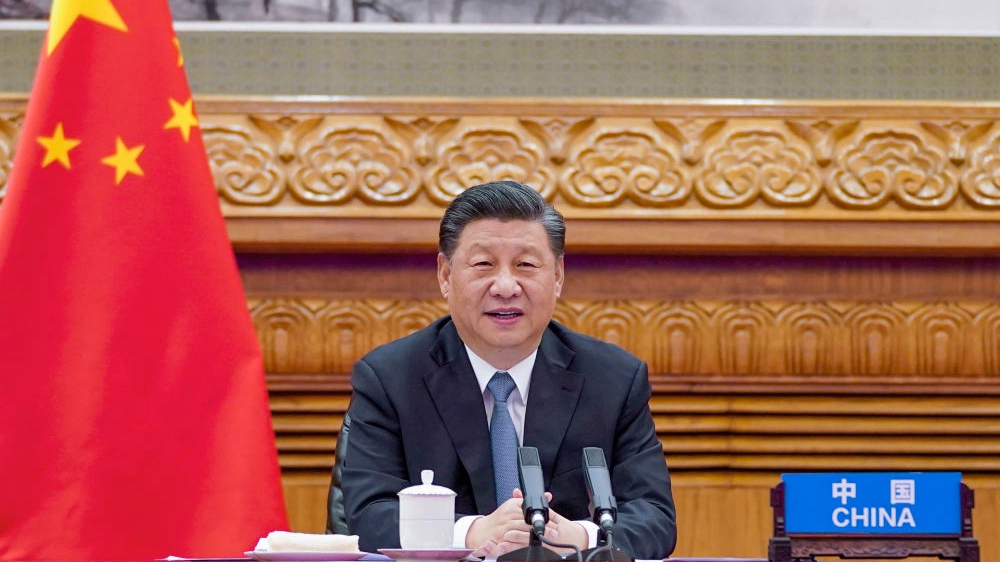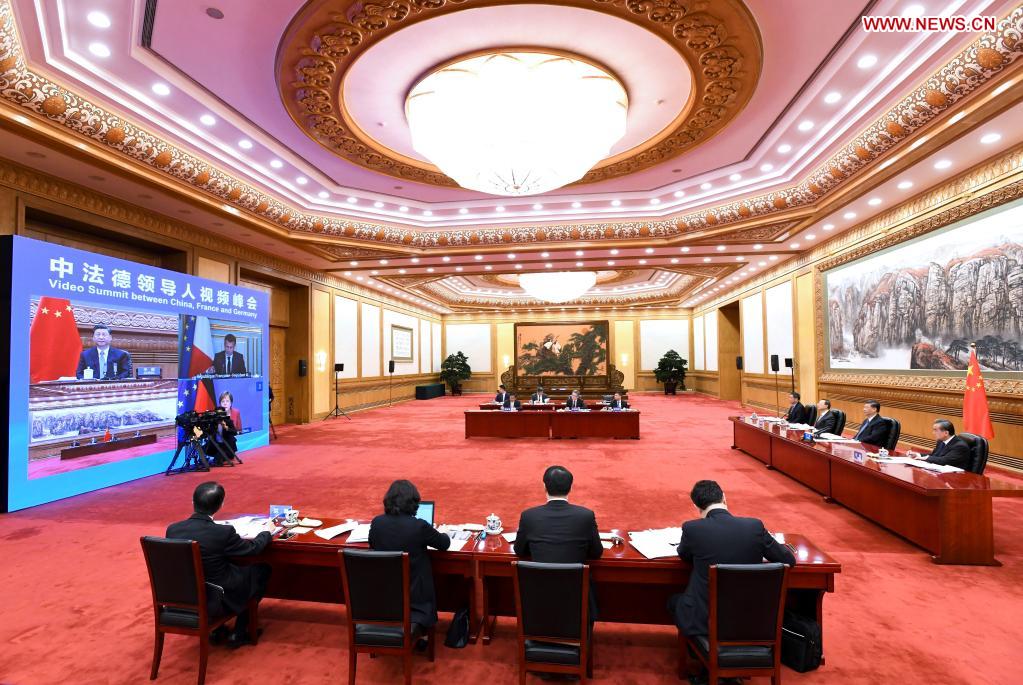01:11

Climate change is not taking a break from wreaking havoc in 2020, with the joint highest global temperatures on record, rampant bushfires, the faster rates of sea level rise and the extinction of some species.
Under this circumstance, Chinese President Xi Jinping, French President Emmanuel Macron, and German Chancellor Angela Merkel held a virtual meeting Friday on climate change, ahead of the Leaders' Climate Summit on Earth Day convened by the U.S., scheduled next week.
Read more:
Could Chinese wind farms power France's green recovery from COVID-19?
China seeks FTA talks with EU following investment deal, ambassador to France says
Carbon neutral goals: Where does Europe stand?
Emphasizing that he always advocates building a community with a shared future for mankind, the Chinese president voiced his willingness to strengthen cooperation with France and Germany on climate change.
"Tackling climate change is a common cause for all mankind and it should not become a geopolitical bargaining chip, a target for attacking other countries, or an excuse for trade barriers," he added.

Chinese President Xi Jinping attends a video summit with French President Emmanuel Macron and German Chancellor Angela Merkel in Beijing, capital of China, April 16, 2021. /Xinhua
Chinese President Xi Jinping attends a video summit with French President Emmanuel Macron and German Chancellor Angela Merkel in Beijing, capital of China, April 16, 2021. /Xinhua
China's inspiring pledge
President Xi on Friday's meeting reiterated China's ambitious climate target to bring the country's carbon dioxide emissions peak before 2030 and achieve carbon neutrality before 2060.
"This means that China, the world's largest developing country, will complete the world's highest reduction in carbon intensity and move from carbon peak to carbon neutral in the world's shortest time."
The 14th Five-Year Plan unveiled that China's energy consumption per unit of GDP and carbon dioxide emissions per unit of GDP will be reduced by 13.5 percent and 18 percent, respectively, between 2021 and 2025. It also aims to increase the share of non-fossil energy in total energy consumption to around 20 percent.
Read more:
President Xi's bold carbon neutral goal inspires climate change mitigation globally
Chinese roadmap by 2060 for a carbon neutral future
China nudges up its commitment toward carbon neutrality, here's how
According to Climate Action Tracker (CAT), if China's goal of carbon neutrality before 2060 is achieved, it will alone lower global warming projections by around 0.2 to 0.3 degrees Celsius, the biggest single reduction ever estimated by CAT.
Meanwhile, China's commitment goes beyond the 2065-2070 global carbon neutrality schedule under the Paris Agreement 2 degrees Celsius scenario, which could move global carbon neutrality ahead by 5-10 years.

Walking the talk
"The Chinese side honors our promises with concrete actions," President Xi told Macron and Merkel, adding that China has incorporated peaking carbon emissions and achieving carbon neutrality into overall layout of building an ecological civilization and endeavored to build a green and low-carbon circular economy.
China, with its economic progress over the past decades largely powered by coal, is now among the world's biggest investors in renewable energy, owning 30 percent of the world's installed capacity of renewable energy.
The share of clean energy consumption in the country has risen from 19.1 percent in 2016 to 24.3 percent in 2020, data from the National Bureau of Statistics showed.

The video summit attended by Chinese, French and German leaders in Beijing, capital of China, April 16, 2021. /Xinhua
The video summit attended by Chinese, French and German leaders in Beijing, capital of China, April 16, 2021. /Xinhua
A 2019 study using data from NASA satellites shows that global green leaf area has increased by five percent since the early 2000s, with at least 25 percent of that gain coming in China.
China's forest coverage rate has risen from 12 percent in the early 1980s to 23.04 percent in 2020.
As President Xi also mentioned at the summit, China has been actively working with other countries to cope with climate change especially under the South-South cooperation framework.
According to the Ministry of Ecology and Environment, China has so far signed 38 cooperation agreements on climate change with 35 countries and helped train 2,000 officials and technical personnel from 120 developing countries.

